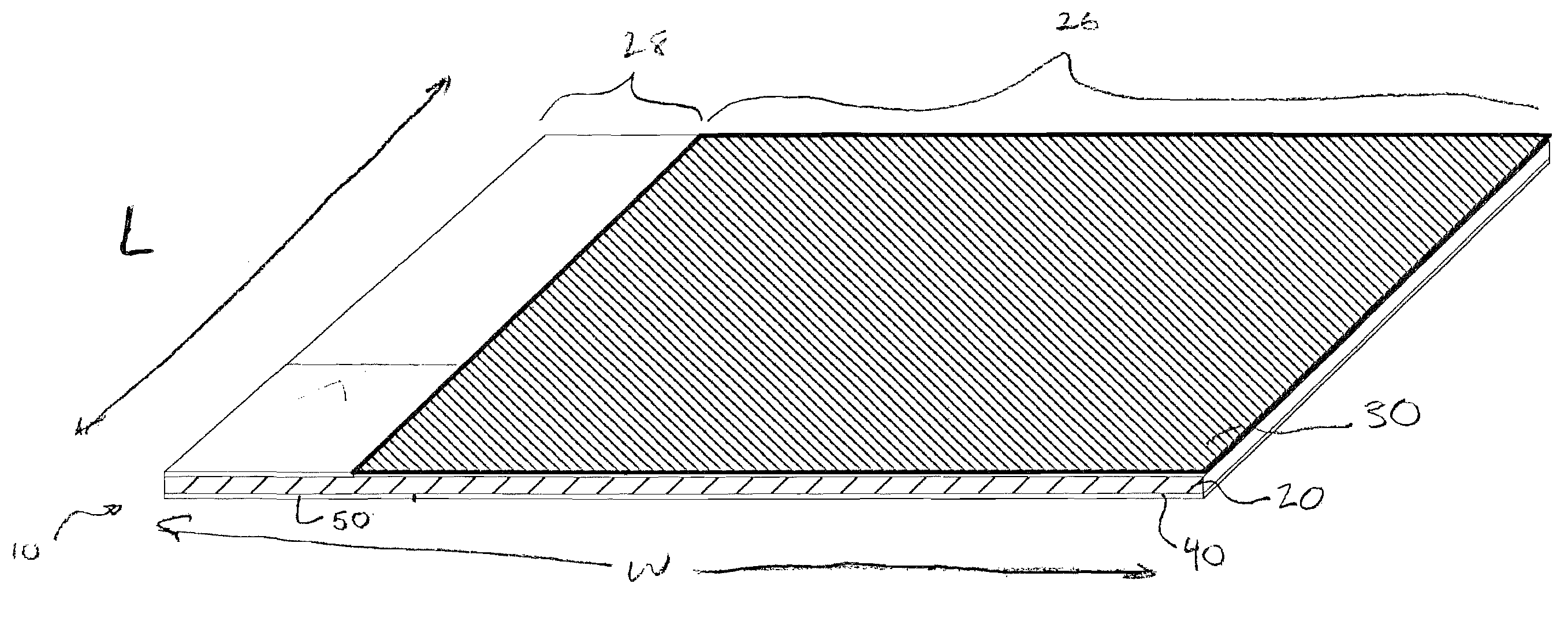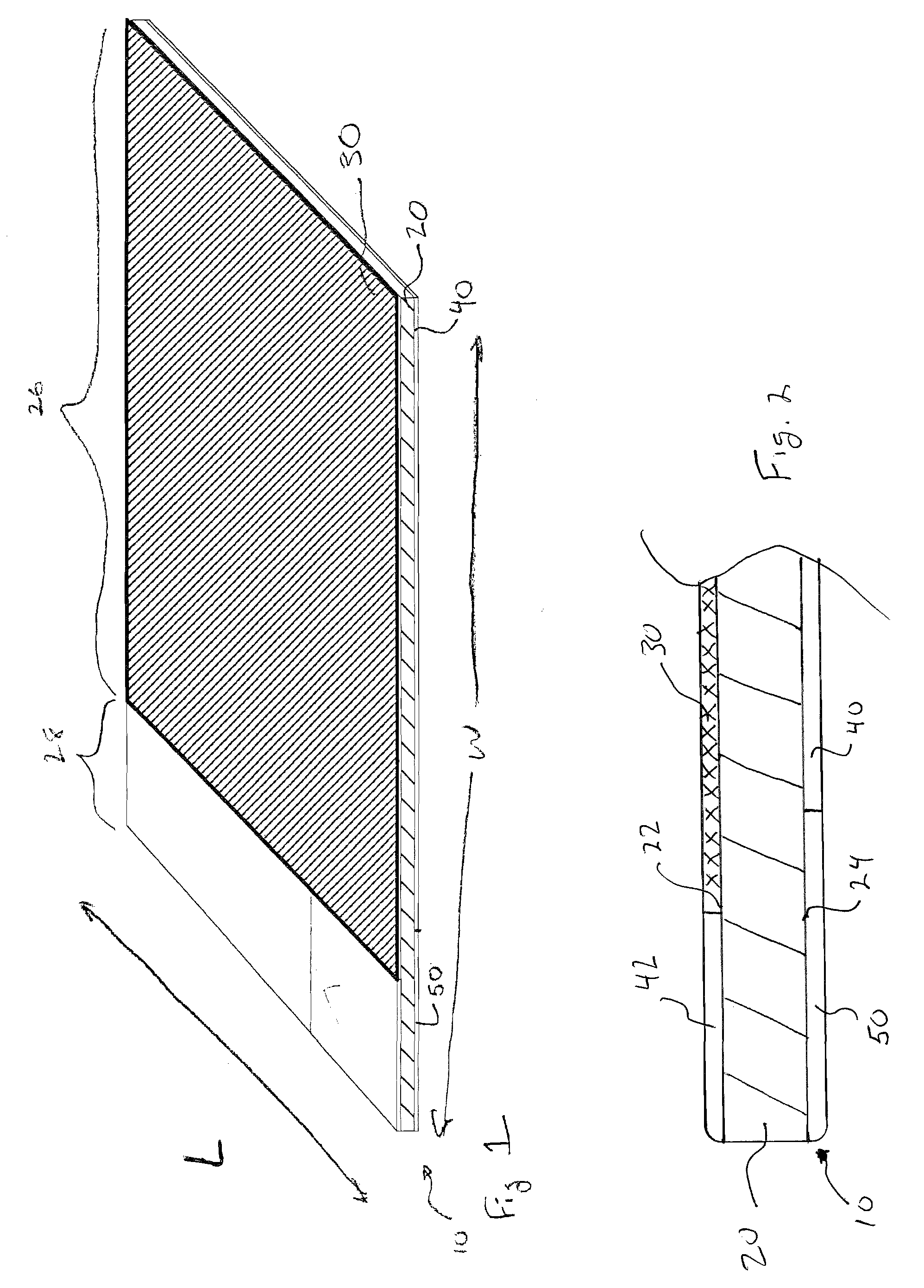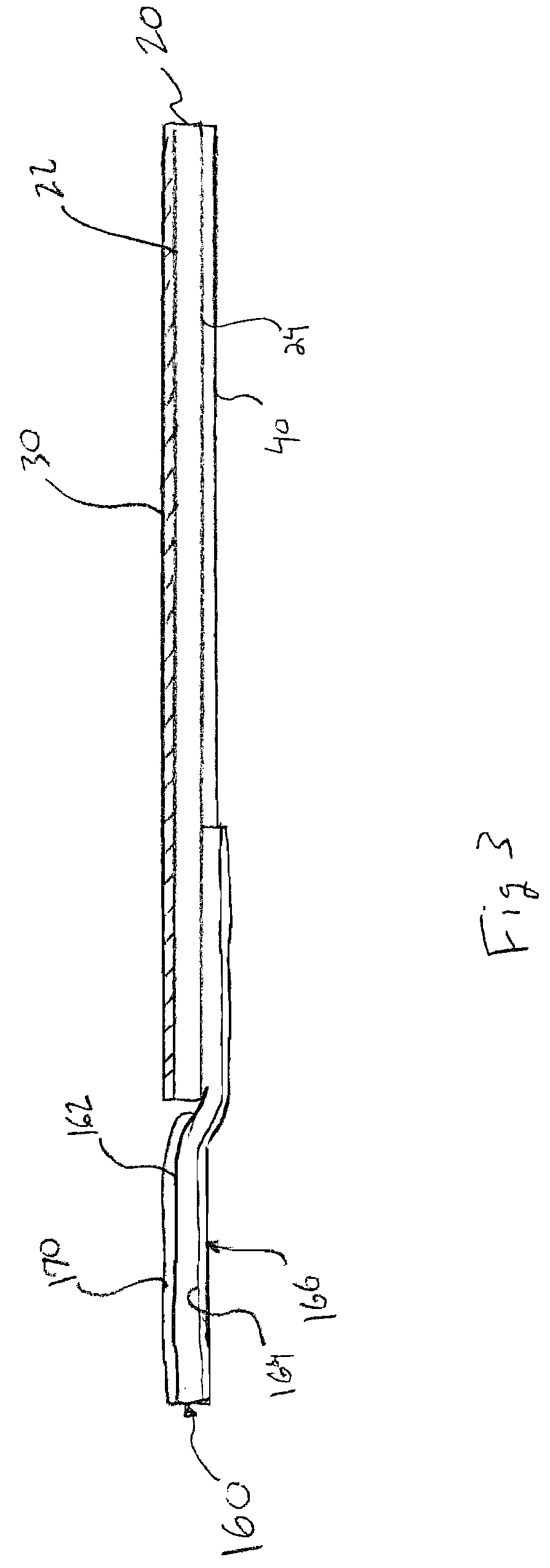Flexible Wicking Membrane
a wicking membrane, flexible technology, applied in the direction of joints tightening/covering, construction, building components, etc., can solve the problems of air leakage around building openings, most common failure points of unwanted air and/or moisture in building envelopes, exterior and interior damage, etc., to improve water flow and improve the first conformance
- Summary
- Abstract
- Description
- Claims
- Application Information
AI Technical Summary
Benefits of technology
Problems solved by technology
Method used
Image
Examples
Embodiment Construction
[0034]Reference will now be made to the accompanying drawings, which at least assist in illustrating the various pertinent features of the present invention. In this regard, the following description that utilizes a flexible membrane to form a sill pan in a window opening is presented for purposes of illustration and description. Furthermore, the description is not intended to limit the invention to the form disclosed herein. Consequently, variations and modifications commensurate with the following teachings, and skill and knowledge of the relevant art, are within the scope of the present invention. It will be appreciated that various aspects of the invention have utility for applications other than forming sill pans for windows and doors, for example, applications where it is desirable to remove moisture from a structure. The embodiments described herein are further intended to explain the best modes known of practicing the invention and to enable others skilled in the art to util...
PUM
 Login to View More
Login to View More Abstract
Description
Claims
Application Information
 Login to View More
Login to View More - R&D
- Intellectual Property
- Life Sciences
- Materials
- Tech Scout
- Unparalleled Data Quality
- Higher Quality Content
- 60% Fewer Hallucinations
Browse by: Latest US Patents, China's latest patents, Technical Efficacy Thesaurus, Application Domain, Technology Topic, Popular Technical Reports.
© 2025 PatSnap. All rights reserved.Legal|Privacy policy|Modern Slavery Act Transparency Statement|Sitemap|About US| Contact US: help@patsnap.com



